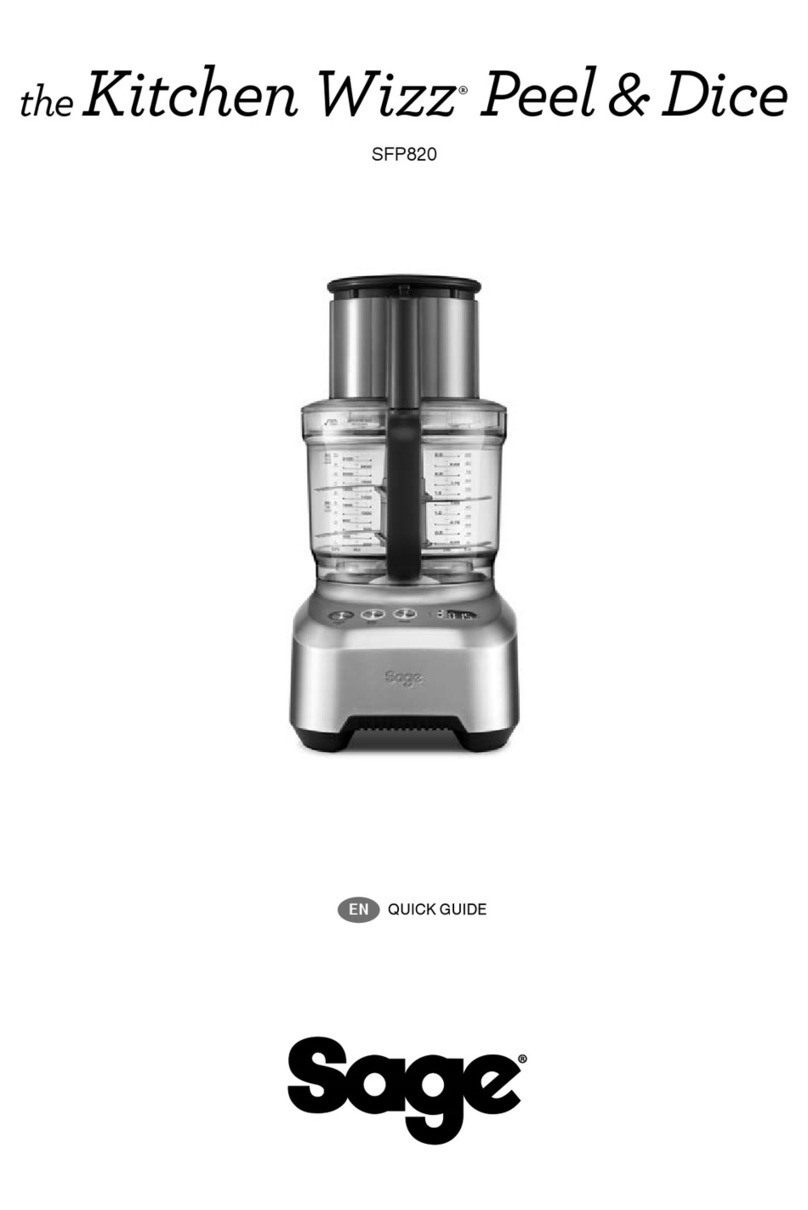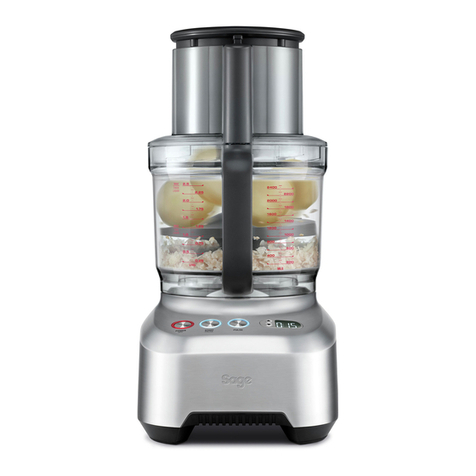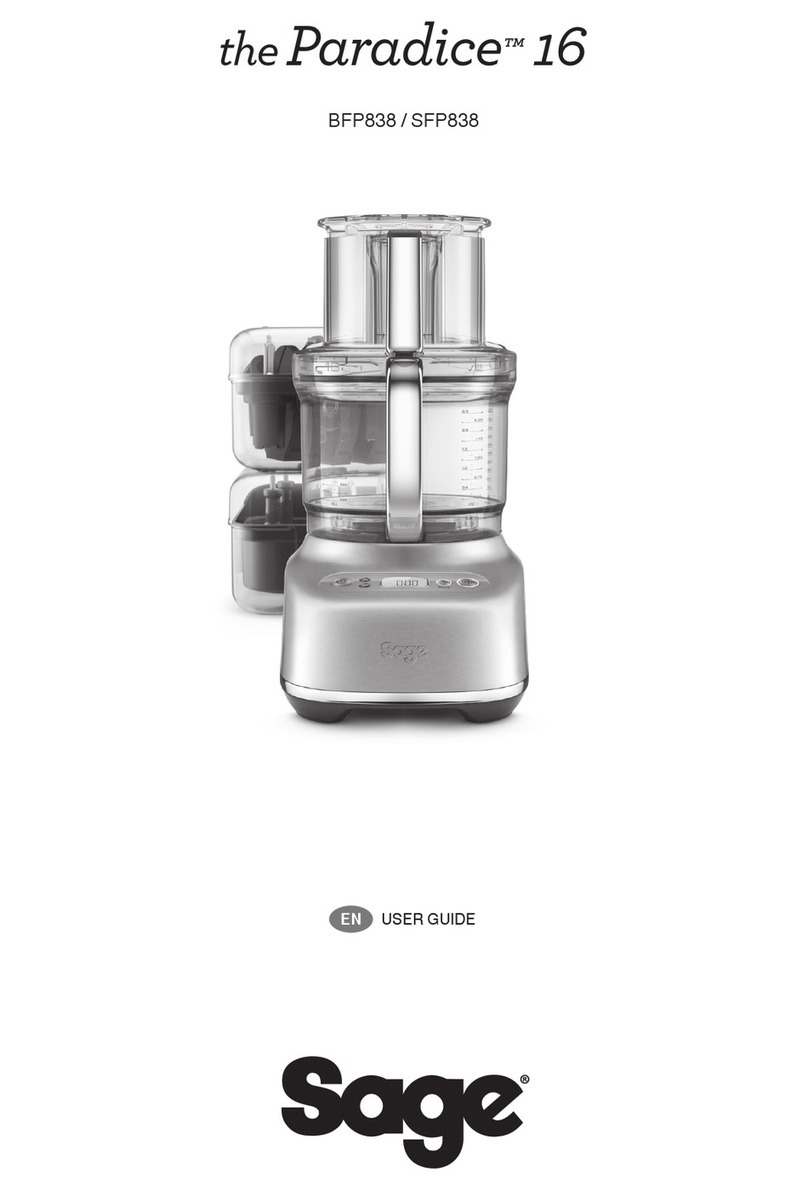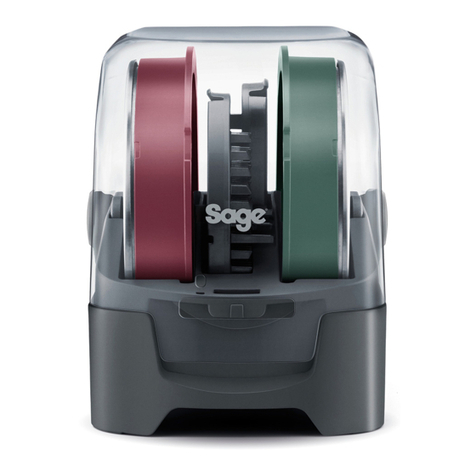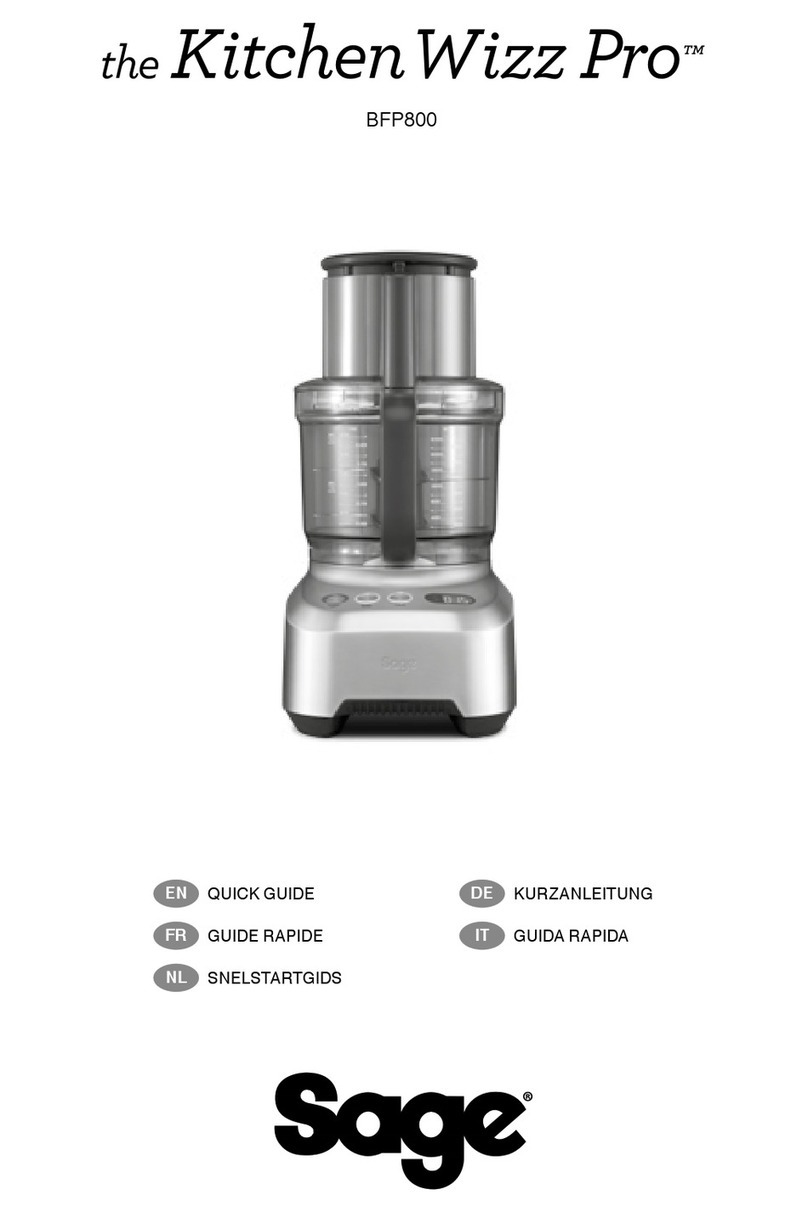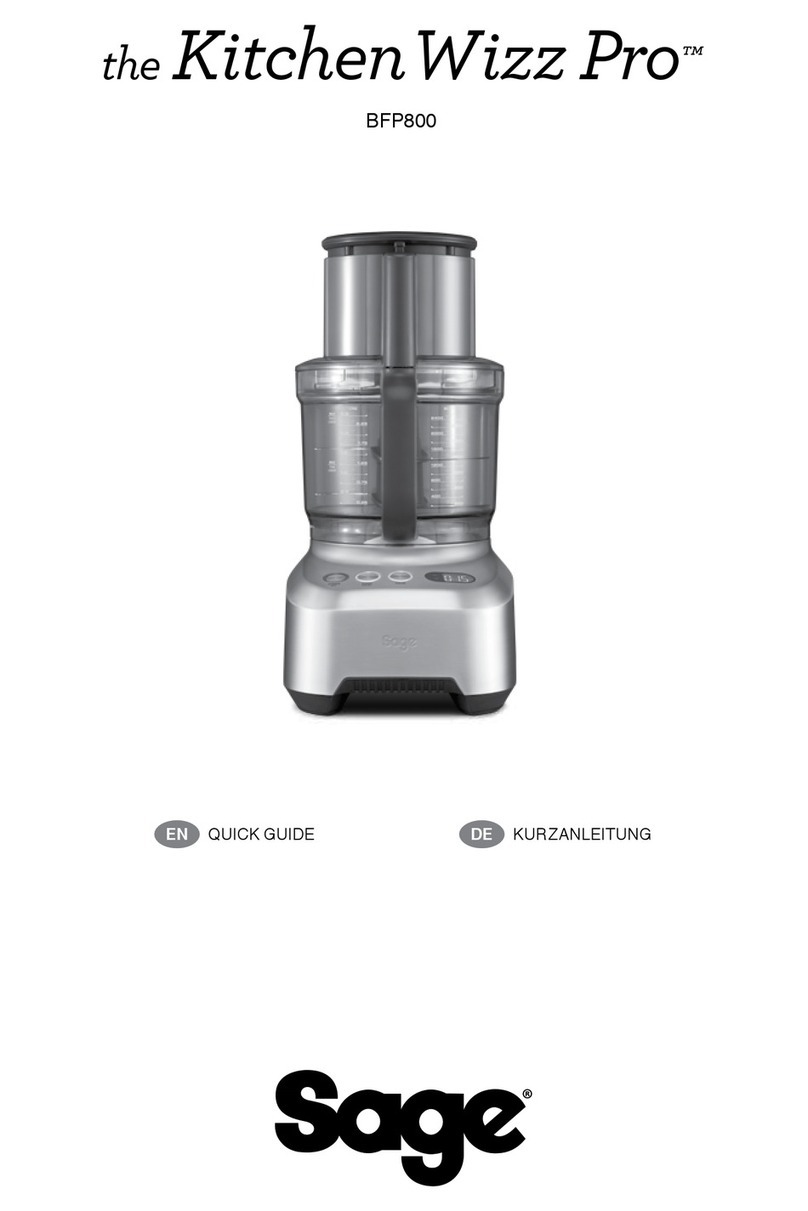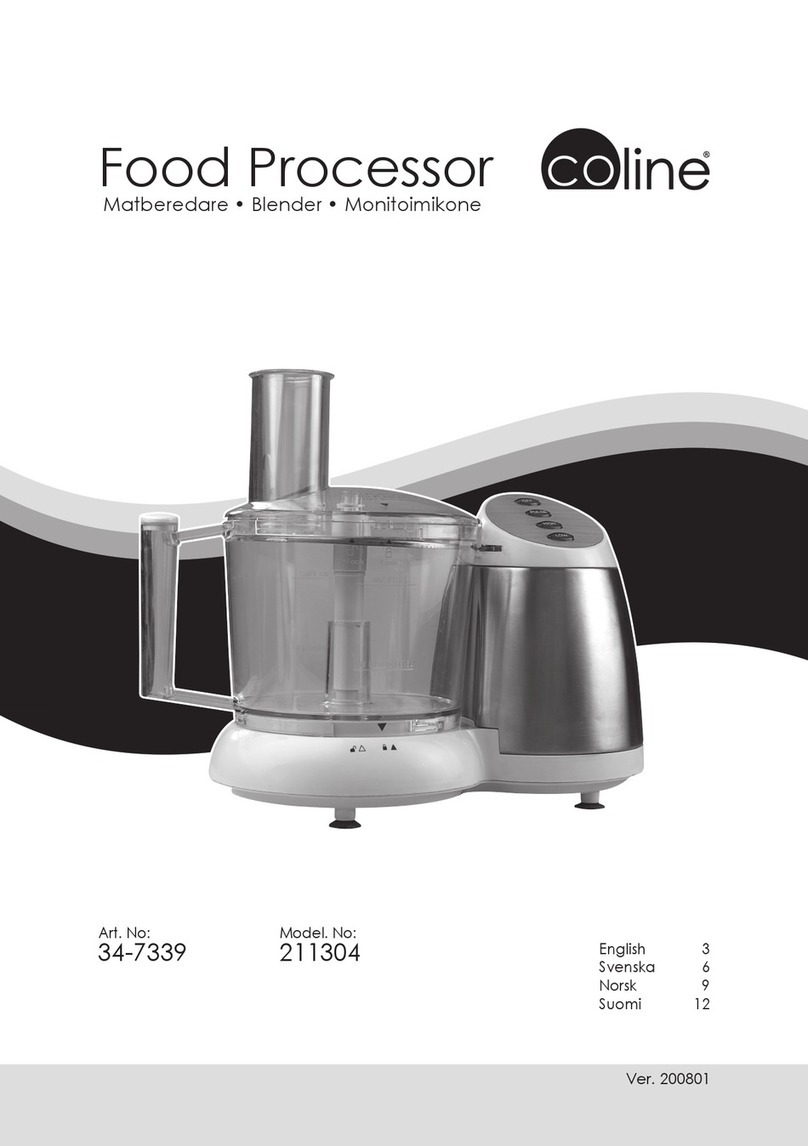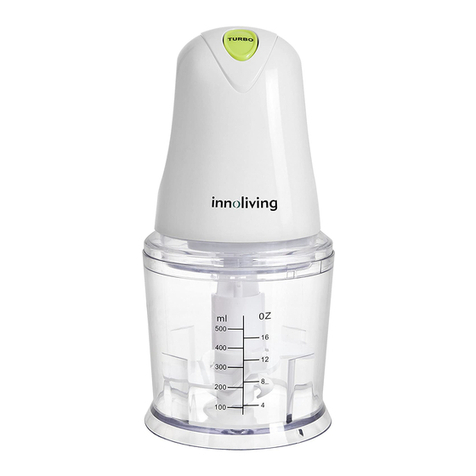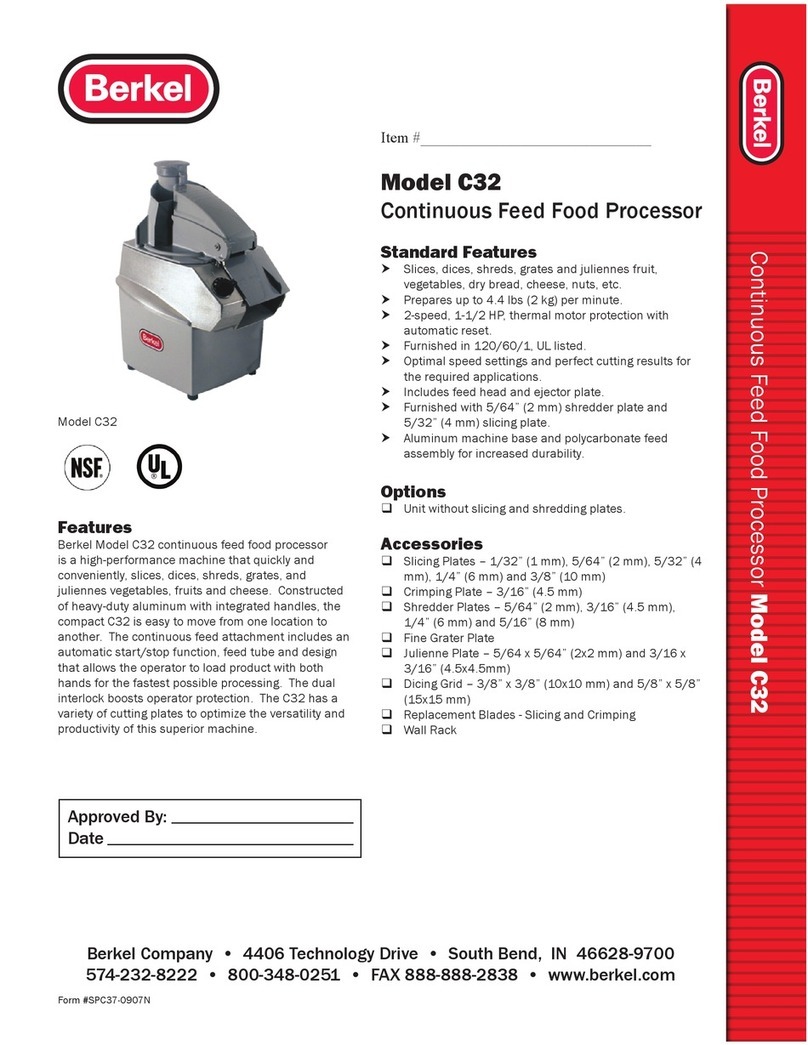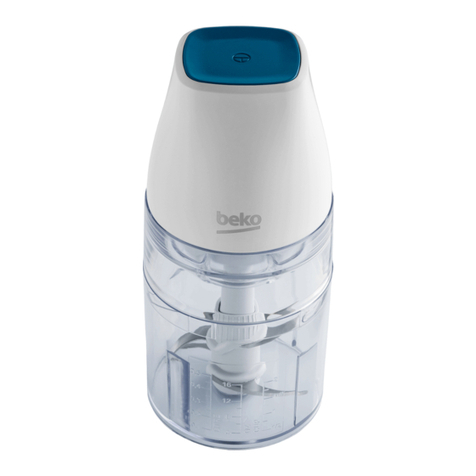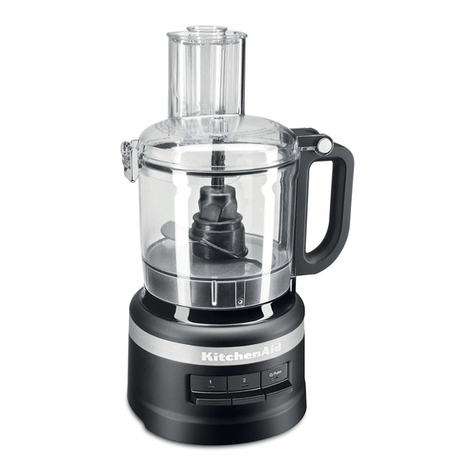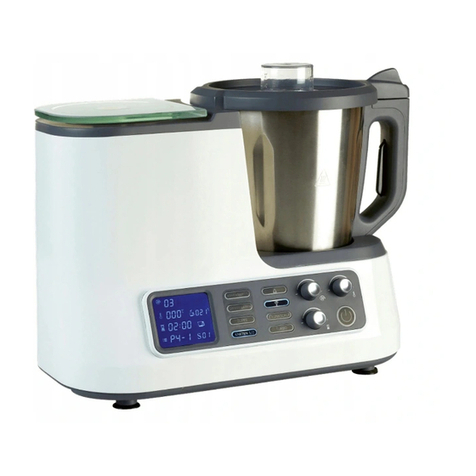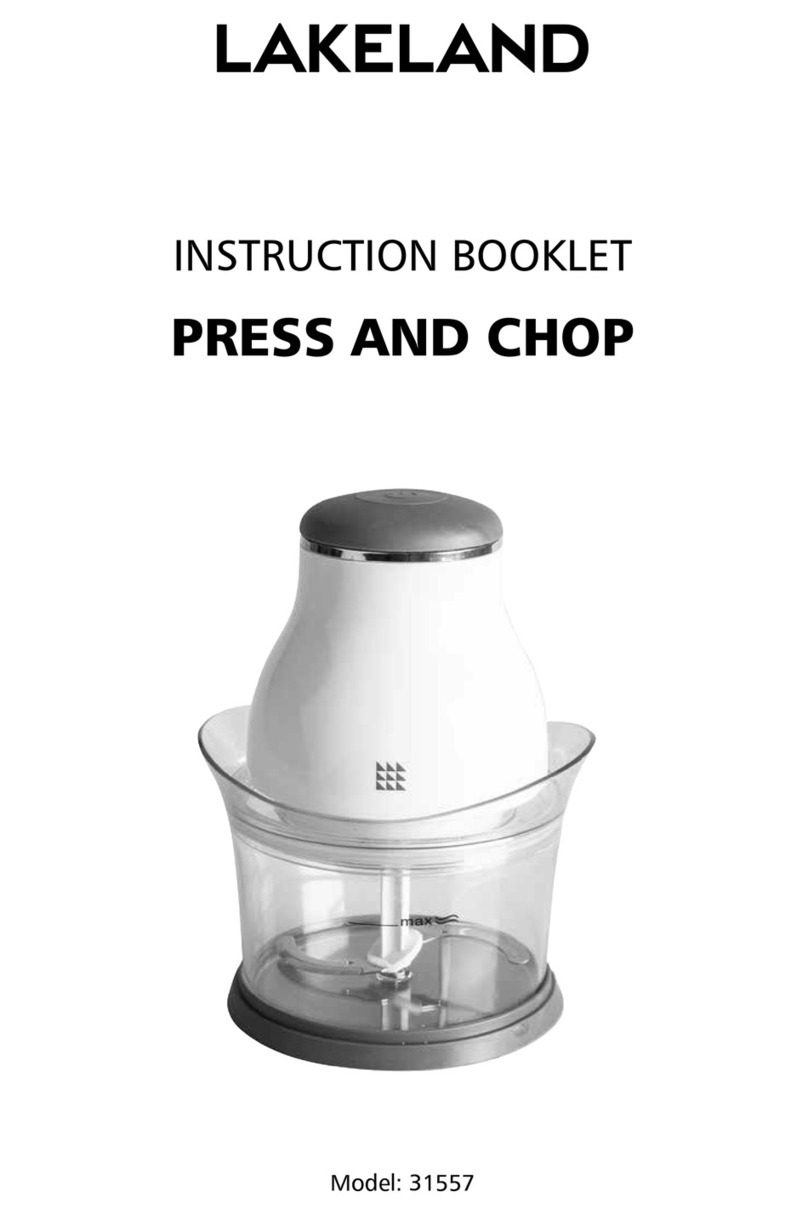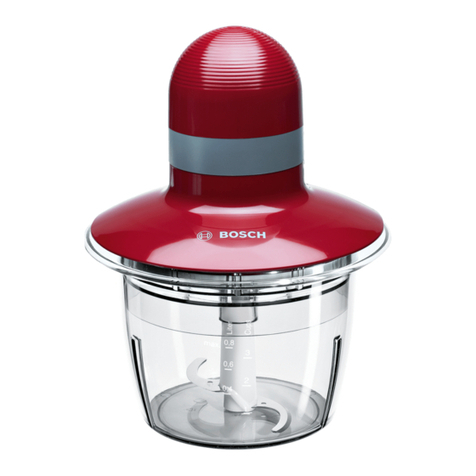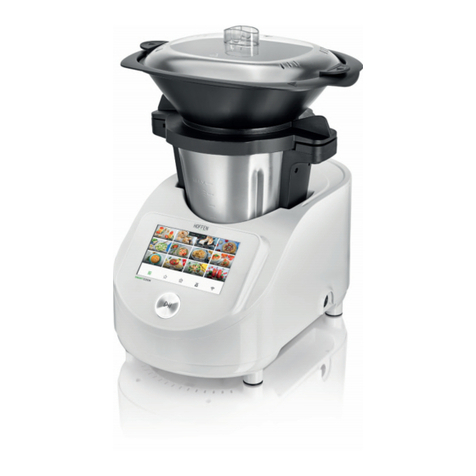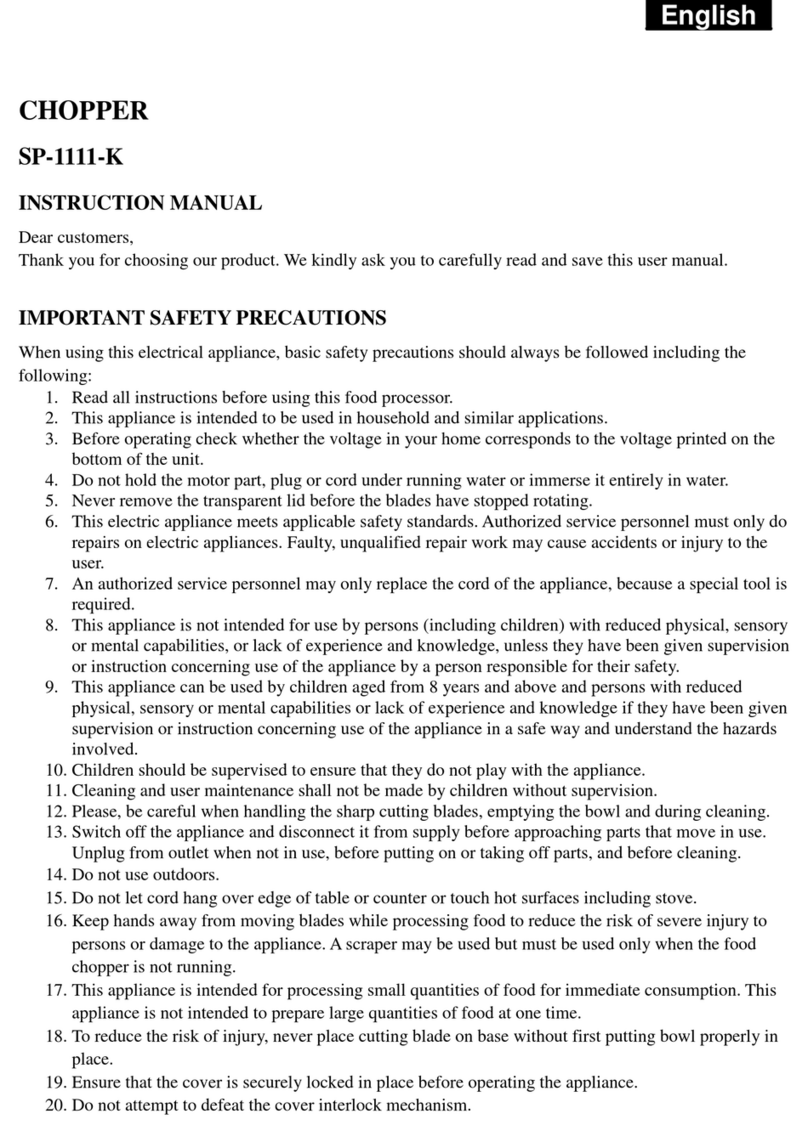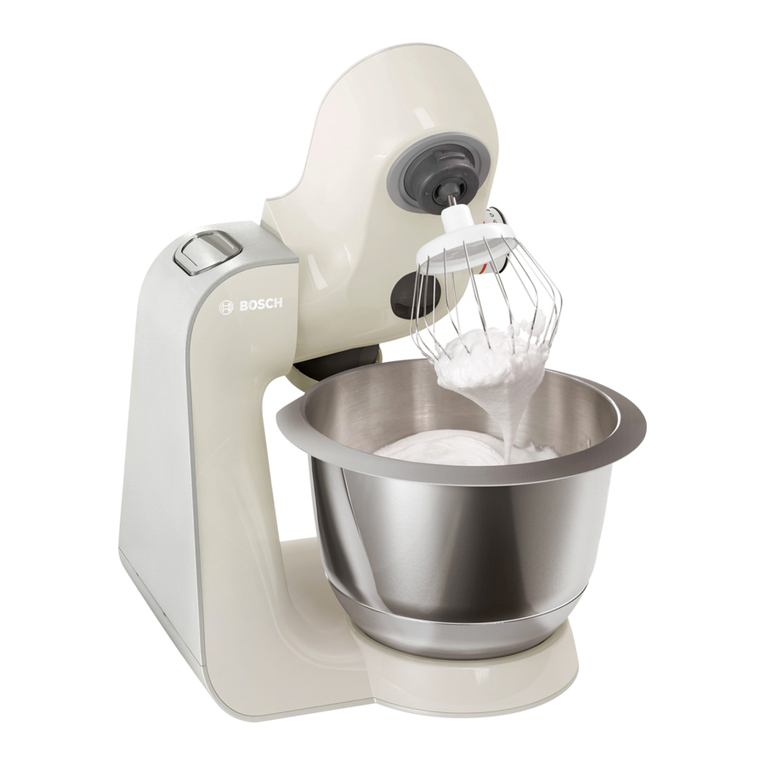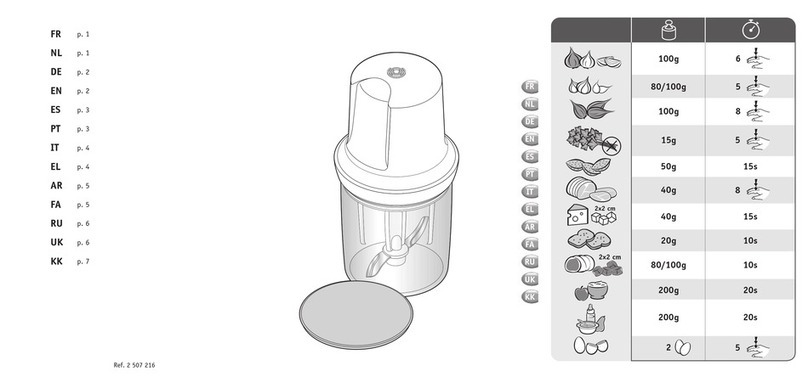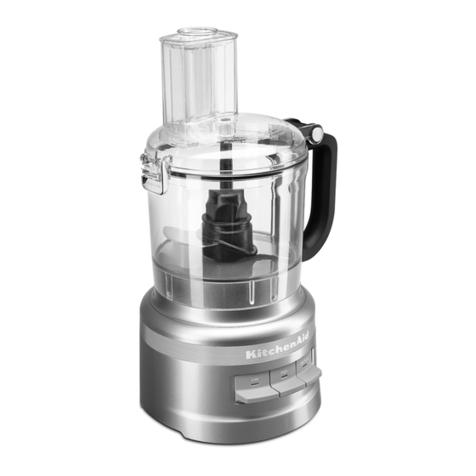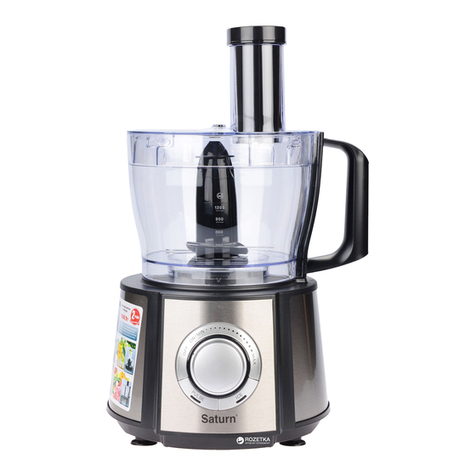
8
BEFORE FIRST USE
Before using your Sage®food processor,
become familiar with all the parts. Remove all
packaging materials and promotional labels,
being careful when handling the processing
blades and discs as they are very sharp. Wash
the processing bowl, processing lid and other
attachments in warm, soapy water. Rinse and
dry thoroughly. (Refer to cleaning, care and
storage section).
1. Place the motor base on a dry, level work
surface. Place the processing bowl on
to the motor base with the handle in line
with the ALIGN HANDLE graphic on
the motor base.
2. Turn the processing bowl clockwise
until the handle aligns with the
TURN TO LOCK graphic.
The processing bowl should
be securely locked into position.
3. If using a disc, rst assemble the disc
spindle onto the bowl drive coupling.
Orientate the disc so that the side you
wish to use is facing upwards. Hold
the disc by the centre plastic moulding
and position the central hole above the
attachment spindle. Push down rmly
until tted correctly.
(Please note that these discs only t the
larger processing bowl).
4. For using the processing blades, carefully
grasp either the 4 blade processor, dough
blade or mini processing blade using
the central plastic support and position
it over the bowl drive coupling and push
down until inserted correctly. If using the
mini processing blade, ensure the mini
processing bowl is assembled into the
main bowl rst.
5. Place the processing lid onto the
processing bowl so the feed chute is
slightly right of the bowl handle and the
arrow graphics are aligned .
Holding the feed chute and pressing
down rmly at the same time, turn the lid
clockwise (as indicated by the graphic)
so the ‘Locking Tab’ on the lid slots into
the ‘Interlocking Safety Catch’ on the
handle.The lid should be securely locked
into position.
Assembly
